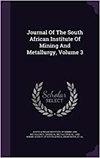Ventilation optimization through digital transformation
IF 0.9
4区 材料科学
Q3 Materials Science
Journal of The South African Institute of Mining and Metallurgy
Pub Date : 2023-02-10
DOI:10.17159/2411-9717/1950/2022
引用次数: 1
Abstract
Underground mines require electricity to operate both the main surface fans and auxiliary systems, with primary ventilation systems typically accounting for approximately 40-60% of the mine's overall electricity consumption. The primary reason for this considerable expense is that most underground ventilation systems are designed for peak demand, regardless of the actual demand, which is commonly dictated by diesel equipment usage in trackless mining operations. Most platinum mines on the Great Dyke in Zimbabwe tend to operate their ventilation systems at this peak level, despite the mine's air quantity being well in excess of the 'true' ventilation needs. This is due to a lack of appropriate ventilation controls. The authors designed and installed a ventilation-on-demand system at one of the bord and pillar platinum mines to minimize the use of redundant air in underground operations. Fourth industrial revolution techniques were applied to the environmental monitoring and tracking systems thereby optimizing air quantity demands. The mine managed to reduce its annual power consumption by 23% through the implementation of manual control and time-of-day scheduling levels of the ventilation-on-demand concept. There was also a 6% productivity improvement, mainly attributable to an increased face time as a result of the significant reduction in the re-entry period following a blast. This paper introduces a novel concept of ventilation optimization through digital transformation targeting mainly room and pillar platinum mines. A system was designed, installed, and commissioned, though there is currently an ongoing optimization process to harness the full benefits such as productivity enhancement, reduced power costs, and improved worker health.通过数字化转型实现通风优化
地下矿井需要电力来操作主地面风机和辅助系统,主通风系统通常占矿井总用电量的40-60%左右。这一可观费用的主要原因是,无论实际需求如何,大多数地下通风系统都是为峰值需求而设计的,而实际需求通常由无轨采矿作业中柴油设备的使用决定。津巴布韦大堤上的大多数铂矿倾向于在这个峰值水平下运行通风系统,尽管该矿的空气量远远超过了“真正”的通风需求。这是由于缺乏适当的通风控制。作者在其中一个bord和pillar铂矿设计并安装了一个按需通风系统,以最大限度地减少地下作业中多余空气的使用。第四次工业革命技术被应用于环境监测和跟踪系统,从而优化了空气量需求。通过实施手动控制和按需通风概念的一天中的时间调度水平,该矿成功地将年功耗降低了23%。生产率也提高了6%,主要是由于爆炸后重返大气层的时间显著缩短,增加了面对面时间。本文介绍了一种通过数字化转型优化通风的新概念,主要针对房柱铂矿。设计、安装和调试了一个系统,尽管目前正在进行优化过程,以充分利用生产力提高、降低电力成本和改善工人健康等好处。
本文章由计算机程序翻译,如有差异,请以英文原文为准。
求助全文
约1分钟内获得全文
求助全文
来源期刊
CiteScore
1.50
自引率
11.10%
发文量
61
审稿时长
4-8 weeks
期刊介绍:
The Journal serves as a medium for the publication of high quality scientific papers. This requires that the papers that are submitted for publication are properly and fairly refereed and edited. This process will maintain the high quality of the presentation of the paper and ensure that the technical content is in line with the accepted norms of scientific integrity.

 求助内容:
求助内容: 应助结果提醒方式:
应助结果提醒方式:


